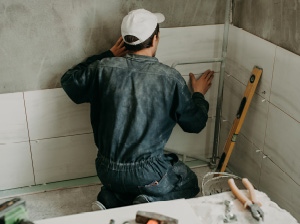
How to Install an Extractor Fan
02/10/2024
What you know, but the client might not, is that while an....

How to Tile a Bathroom Wall
01/10/2024
Remember too, that you can’t tile over glossed surfaces...

How to Install Underfloor Heating
01/10/2024
View our step-by-step guide to installing underfloor heating in at...


How to Seal a Bath
06/11/2019
Getting to the stage of sealing bathroom fixtures and fittings...
